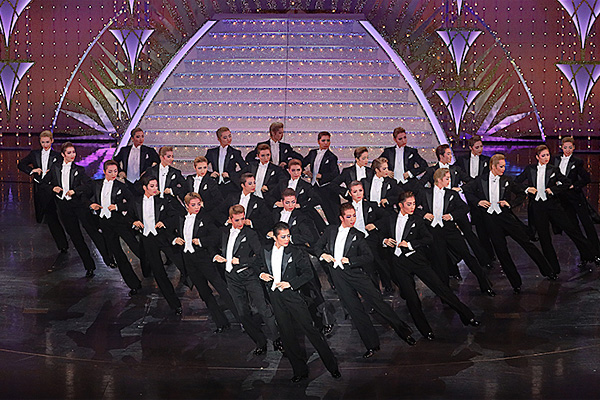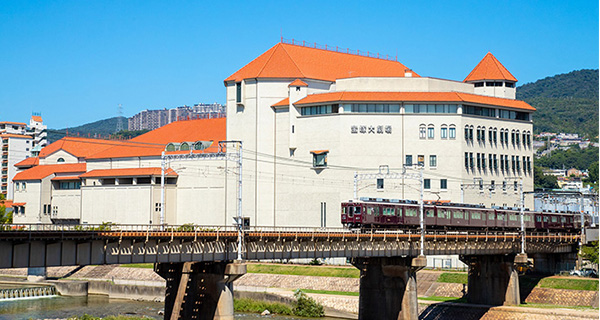The product of an all-female cast: Otokoyaku and musumeyaku cannot exist without one another.
One of the most unique aspects of the Takarazuka Revue is that all theatrical company members are women. As such, women play both male and female roles on stage.
Actresses who specialize in male roles are called
otokoyaku, while their female counterparts are the
musumeyaku. It is easy to tell them apart by appearance even off stage:
Otokoyaku cut their hair short and wear masculine or androgynous clothes, while
musumeyaku tend to dress in feminine attire and keep their hair long.
Height, vocal range, personal preference, and some other factors all play into whether a Takarasienne will become an
otokoyaku or a
musumeyaku. While most of the time these choices are final, there are examples of actresses changing roles mid-career.
The
otokoyaku specialize in presenting as men on stage, while the
musumeyaku help the masculine traits stand out more by emphasizing their own femininity. Removing either of these roles would result in Takarazuka losing its essence. Thus, the
musumeyaku and
otokoyaku working together is the greatest appeal of the revue.
-

Star Troupe, “More Dandyism!” (2021)
-

Cosmos Troupe, “NEVER SAY GOODBYE” (2022)
Flower, Moon, Snow, Star and Cosmos: Find the troupe that speaks to you!
Currently Takarazuka Revue has five troupes: Flower, Moon, Snow, Star and Cosmos. In addition, there is also the group called Senka, or the Superior Members, with the most experienced actresses who often have a long history with Takarazuka.
Each troupe has its own distinctive charm that they emphasize through their performances, so everyone can surely find something that fits their tastes. But Takarazuka did not always have a troupe system. The first two troupes, Flower and Moon were established seven years after the first performance, in 1921, then more troupes were created in the following years as the demand for Takarazuka shows increased.
Today, around eighty actresses are assigned to each troupe. In order to become a Takarasienne, aspiring actresses must first pass the Takarazuka Music School examinations, and finish the two-year course that provides an education in the performing arts. After graduation, actresses have their debut show in the Grand Theater. After their debut, they are assigned to a troupe where they begin their quest for stardom.
The troupes take turn performing at the two main Takarazuka Theaters, following a yearly schedule, and bring a wide variety of shows to life. Currently there around eighty members in each troupe, working hard towards making the dream world come alive on stage.
The top star and top musumeyaku are the faces of each troupe.
Every troupe has a leading pair of actresses: the
top star and her partner, the
top musumeyaku. The top star is the most renowned
otokoyaku in the troupe. Together, the top star and top
musumeyaku form the top pair (or the “top combi” in Japanese).
Most of the performances revolve around the top pair and the romance blooming between the two of them. Other troupe members play a supporting role in their story while also getting the opportunity to show off their own talents and charm points. Every top pair brings a different flavor to the troupe they represent and thus the atmosphere of the group changes each time a new top pair is inaugurated.
![]()



![]()
![]()



